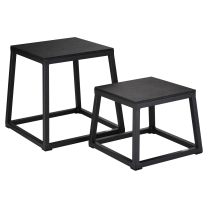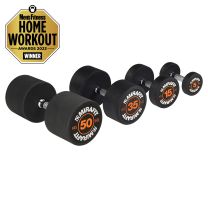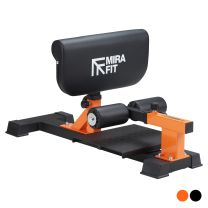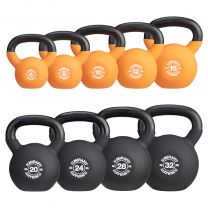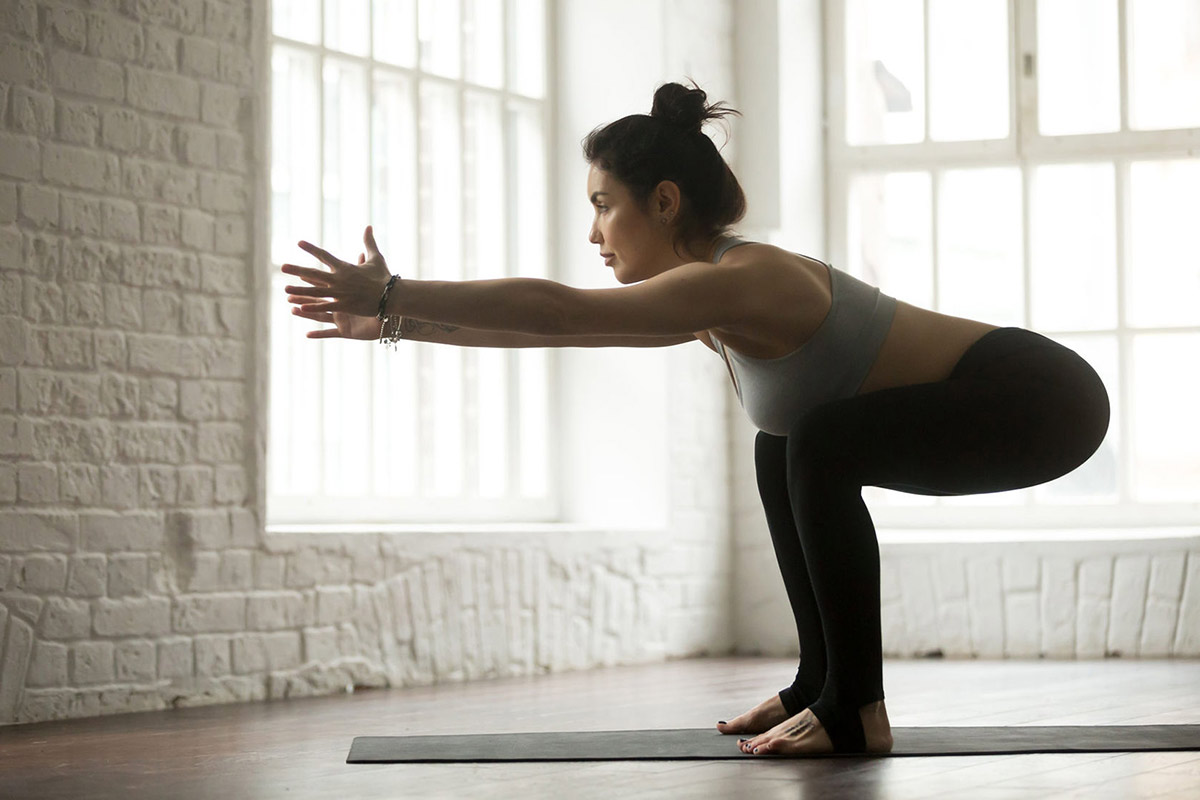How to Target Your Quads
How to Target Your Quads

While the glutes are often seen as the king of lower body muscles, having strong quads is extremely beneficial. But can you train your quads too much?
What is Quad Dominance?
Quad Dominance is a term used to describe athletes and individuals with ‘over-developed’ quadriceps, relative to their hamstrings.
Is Quad Dominance Negative?
Many fear that if they overtrain their quads, they will become ‘quad dominant’, putting them at risk of injury. To date, there isn’t any large bodies of data suggesting that quad dominance is inherently a risk of injury. However, being more quad dominant is repeatedly seen as beneficial for sports in which the quads are used heavily. For example, Olympic Weightlifting.
How To Train Your Quads
The major concentric function of the quads is to powerfully extend the knee, of which the entire quadriceps are involved in. They also aid in flexion of the femur (upper leg) around the hip, of which the Rectus Femoris is involved in. In simple terms, straightening the leg and picking your knee up in front of you, respectively.
So, to train the quads, you want to primarily focus on movement or torque around the knee joint.
Top 10 Quad Building Exercises
1 - Sissy Squat

The Sissy Squat is great for isolating the quads, without needing to stabilise the body, due to the anchored position. This allows you to focus on working the quads close to mechanical failure because it is easier to maintain technique as you fatigue.
• Anchor your feet into a Sissy Squat Bench, stood at hip width, facing forwards.
• Sit back and down, as far as you can, keeping your shins vertical, up against the main pad.
• Reverse the movement to complete a rep.
• Add weights in your hands or slow the tempo to increase the intensity.
2 - Gymnastic Rings Pistol Squats
The Gymnastics Rings Pistol Squats are a great way to unload a typical pistol squat to slowly introduce you to a normally very advanced exercise, building your single leg strength and stability.
• Attach Gymnastic Rings to a pull up bar, up and in front of your body at a height at which your arms can take support from them as you reach the bottom half of your pistol squat.
• Once at an appropriate height, stand on one leg, holding the rings for support.
• With your unworking leg out in front, sit back and down and as deep as you can, keeping the weight in the middle of your working leg.
• Reverse the movement to complete a rep, using your arms and the Gymnastics Rings to help pull you back up.
3 - Front Squats
The more anterior load of the front squat versus other squat variations forces the body to organise around more forward knee translation, further targeting the quads.
• Assume a front rack position, pushing your shoulders forward so the barbell sits up on the anterior deltoids.
• Stand up and away from the Squat Rack.
• Assume a squat stance, feet shoulder width, facing slightly outwards (10 and 2 on a clockface as a guide).
• Sit between your knees until you are in a deep squat position, keeping your elbows up to maintain your front rack position.
• Stand back up to complete the rep.
4 - Single Leg Squat to Box

The single leg squat to box requires high stability, while loading the quads in a unilateral fashion. This makes it a great accessory to your higher force exercises.
• Stand upright with your calves up against a plyo box.
• Raise one leg off the floor, out in front.
• With the weight on your working leg, sit back and down until you touch the box before standing back up, keeping the chest upright throughout.
• Repeat on both sides for the desired number of reps.
5 - Bulgarian Split Squats
The Bulgarian split squat is great for targeting the lower body in a similar loading pattern to a typically bilateral squat, but with less axial (spinal) loading. This is great if you want to accumulate more lower body training volume, after your heavy axial loaded exercises.
• Raise your back foot on a Split Squat Stand, with your front foot just in front of your torso.
• Square off your hips so that they are facing forwards, along with your torso and shoulders.
• Lean onto your front leg while you drop your back knee to the floor.
• Drive the floor away through the front leg to stand back up and complete the rep.
• Repeat for the desired number of reps on each leg.
6 - Dumbbell Seated Leg Extension

Leg extensions are a great variation to force you to load the quads and the knees due to the highly constrained position; often during more complex exercises, we can self-organise away from loading the quads and knees as much by using the hips more, this exercise stops that so you can really target the quads.
• Sit on a weight bench with your knees bent to start and a light dumbbell held between your feet.
• Hold onto the bench with your hands for stability.
• Powerfully extend your knees, squeezing the quads at the top to get full extension, as if trying to touch the sky with the dumbbell between your feet.
• Slowly lower back down to complete the rep.
7 - Heel Elevated Back Squat
The heel elevation is a great exercise constraint for those that struggle to drive their knees forward during a regular squat. It allows you to squat deeper, with more forward knee translation than normal, strengthening the quads and knees.
• Step under a barbell on a squat rack, squeezing the bar onto your upper traps.
• Step away from the rack, and onto a Squat Ramp, with your feet at hip width, facing forwards.
• Sit down as deep as you can, driving your knees forwards, keeping your feet flat on the ramp.
• Stand back up to complete a rep, with your hips and shoulders rising at the same rate.
8 - Kettlebell Seated Single Leg Knee Extension

The single leg knee extension holds the same benefits as a bilateral knee extension, but it also isolates one leg at a time, which is great for reducing side to side imbalances.
• Sit on a weight bench with your knees bent to start and a light kettlebell hooked over one foot.
• Hold onto the bench with your hands for stability.
• Powerfully extend your knee, squeezing the quads at the top to get full extension, as if trying to touch the sky with kettlebell on your foot.
• Slowly lower back down to complete the rep and repeat on the other foot.
9 - Zercher Barbell Step Up
The Zercher position is great for ‘pulling’ the weight onto the front leg, where usually people use the back leg more than desirable during a step up, thus targeting the quads, instead of overworking the calf on the back leg.
• Hold a barbell in a Zercher position, between your biceps and forearms, with your fists to the sky.
• Step onto a low to moderate height plyo box with your working leg.
• Drive the floor away through the front working leg until your front leg is straight.
• Reverse the movement to complete the rep.
• Repeat on both sides for the desired number of reps.
10 - Forward Lunge
Forward lunges are great for developing strength and stiffness in the quads as you need to absorb the heavy landing and then ballistically explode back to the start position. This is great for runners and field sport athletes who need to be strong in their decelerations and accelerations.
• Stand upright with your feet facing forwards, hip width apart.
• Take an exaggerated step in front of your body to lunge forward, absorbing the landing before dropping your back knee to the floor to get full range of motion.
• Drive the floor away to explosively reverse the movement and return to your start position.
• Repeat on both sides for the desired number of reps.
If you are looking to get bigger and stronger quads, add a selection of these exercises into your next training block! Remember, strength is never a weakness, so go get those quads stronger!
Written by guest author Ewan Hammond.
For more content, follow us on Instagram, YouTube, TikTok, and on our official Mirafit Facebook page.
Enter your email to signup to our newsletter
Tags: Equipment > Bars and Weight Plates ; Exercise Type > Strength

